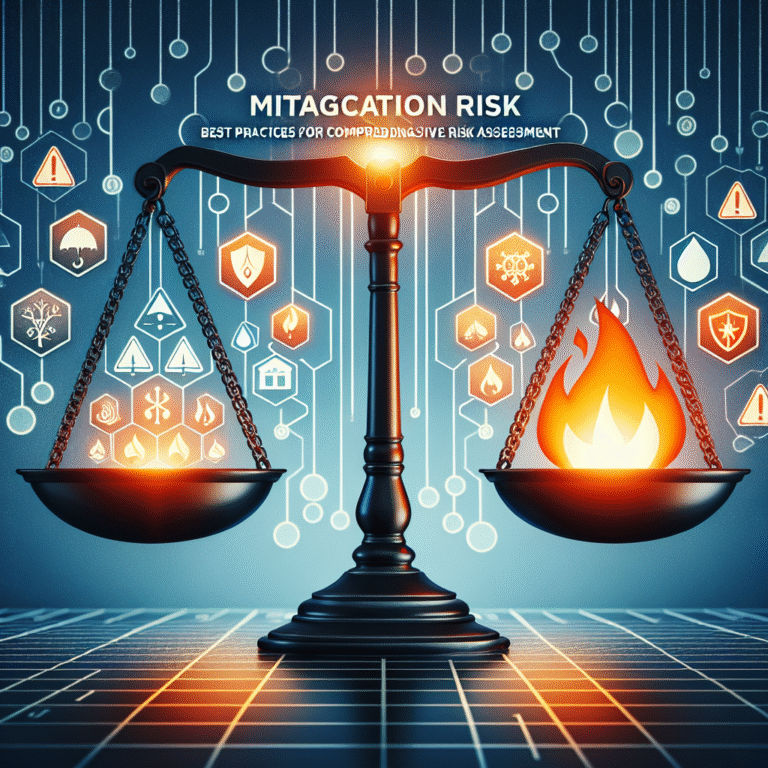
Introduction: The Power of Agile Leadership
In today’s fast-paced and ever-changing business landscape, organizations are challenged like never before. From technological advancements to shifting consumer behaviors, the ability to adapt has become a critical determinant of success. Enter Agile Leadership Development: a transformative approach designed to foster resilience and responsiveness in leaders. Navigating Change: How Agile Leadership Development Drives Success isn’t just a catchy phrase; it encapsulates a revolutionary strategy that equips leaders to steer their teams through uncertainty while driving organizational growth.
Imagine a ship captain guiding a vessel through turbulent waters. The captain’s ability to adjust sails, navigate challenges, and lead the crew with confidence is crucial for reaching the destination safely. In the corporate world, agile leaders serve a similar role—guiding their teams through changes while maintaining focus on key objectives.
In this article, we’ll delve deep into how Agile Leadership Development enables organizations to successfully navigate change. We’ll explore practical case studies, engaging insights, and actionable strategies that you can employ to cultivate agile leadership within your teams.
Understanding Agile Leadership
What is Agile Leadership?
Agile leadership is less about strict hierarchies and more about adaptive, collaborative approaches. This form of leadership draws upon principles from Agile methodologies, originally developed for software development, and applies them to leadership styles across various industries.
An agile leader doesn’t just react to change; they anticipate it. They cultivate an environment where teams can thrive amid uncertainty and encourage innovative thinking.
Key Characteristics of Agile Leaders
- Adaptability: The ability to pivot strategies and approaches based on feedback and changing circumstances.
- Collaboration: Fostering a culture where team members feel valued and are encouraged to contribute ideas.
- Visionary Thinking: Looking beyond immediate challenges to foresee future opportunities and threats.
- Empathy: Understanding and valuing the perspectives and emotions of team members.
The Importance of Navigating Change
In any organization, change is inevitable. Be it due to market trends, technological advancements, or shifts in consumer expectations, adapting to change is crucial. Navigating Change: How Agile Leadership Development Drives Success highlights the necessity of leaders being equipped to handle these transitions effectively.
The Impact of Ineffective Leadership During Change
When leaders fail to navigate change, it can lead to significant consequences. Examples include:
- Decreased Employee Morale: Uncertainty can lead to anxiety among team members, reducing their productivity.
- Loss of Market Position: Companies that resist change risk becoming obsolete.
- High Turnover Rates: Employees are more likely to leave organizations where they feel unsupported during transitions.
Exploring Case Studies
Case Study 1: Spotify’s Agile Teams
Spotify, the music streaming giant, exemplifies the success of agile leadership. The company employs small, cross-functional teams called "squads," each led by an Agile leader. By promoting autonomy and accountability, these leaders can adapt swiftly to customer feedback and emerging trends.
Analysis
This case illustrates Navigating Change: How Agile Leadership Development Drives Success through the context of real-world agility. Their structure allows for quick pivoting, enabling Spotify to maintain their competitive edge in a dynamic market.
Case Study 2: IBM’s Transformation Journey
In the early 2010s, IBM faced flat revenues and increased pressure from competitors. By embracing Agile Leadership principles, the company initiated a cultural transformation. Leaders focused on fostering innovation and collaboration across teams.
Analysis
IBM’s change presented the peril of stagnation if leaders failed to adapt. Instead, they leveraged Agile Leadership Development to rejuvenate their workforce and recommit to growth.
Strategies for Developing Agile Leadership
1. Foster a Culture of Continuous Learning
Encourage team members to embrace learning opportunities—whether through courses, webinars, or internal workshops. This mindset cultivates adaptability and prepares leaders to meet evolving challenges.
2. Encourage Open Communication
Create environments where feedback is encouraged. Agile leaders must prioritize transparency and accessibility—promoting a culture where team members feel safe sharing both successes and failures.
3. Develop Emotional Intelligence
Agile leaders must cultivate empathy and relationship management skills. Training sessions focused on emotional intelligence can help leaders better understand team dynamics and individual needs.
4. Implement Feedback Loops
Establish regular check-ins and performance reviews to gauge progress and adapt strategies. Feedback loops can be crucial for continuous improvement and informed decision-making.
| Strategy | Description | Benefits |
|---|---|---|
| Continuous Learning | Facilitate skill-building opportunities | Enhances adaptability |
| Open Communication | Promote transparent dialogue | Builds trust |
| Emotional Intelligence | Focus on empathy cultivation | Improves team dynamics |
| Feedback Loops | Regular performance assessments | Aids in strategy refinement |
The Role of Technology in Agile Leadership Development
With the rise of digital transformation, technology plays a pivotal role in cultivating agile leadership.
Tools for Success
- Project Management Software: Tools like Trello and Asana allow agile teams to organize tasks effectively, ensuring clarity in roles and priorities.
- Collaboration Platforms: Platforms like Slack or Microsoft Teams facilitate open communication, further emphasizing adaptability in leadership.
The Evolution of Remote Work
The COVID-19 pandemic accelerated the adoption of remote work, challenging leaders to adapt. Agile leadership principles became essential as leaders had to navigate team dynamics from a distance, fostering connection and collaboration through virtual means.
Conclusion: The Future of Agile Leadership
As we contemplate Navigating Change: How Agile Leadership Development Drives Success, it’s evident that the need for agile leaders is more pressing than ever. The ability to adapt, inspire, and lead amidst complexities defines a leader’s success today.
Embracing Agile Leadership Development isn’t just about keeping pace with change. It’s about leveraging change as an opportunity for growth and innovation. As organizations continue to evolve, those who prioritize developing agile leaders will undoubtedly have a competitive advantage in their respective industries.
Motivational Takeaway
In the words of John F. Kennedy, “Change is the law of life. And those who look only to the past or present are certain to miss the future.” As you cultivate agile leadership within your organization, remember that the future belongs to those who dare to navigate change.
FAQs
1. What is Agile Leadership?
Agile leadership refers to a collaborative, adaptive leadership style focused on fostering team innovation and resilience in the face of change.
2. How can organizations implement Agile Leadership Development?
Organizations can implement Agile Leadership Development by promoting continuous learning, encouraging open communication, and fostering a culture of feedback.
3. Why is emotional intelligence important for agile leaders?
Emotional intelligence enhances a leader’s ability to connect with team members, understand their emotions, and navigate interpersonal dynamics effectively.
4. What are the benefits of cultivating agile leaders?
Cultivating agile leaders leads to increased adaptability, improved employee morale, and enhanced innovation within organizations.
5. Can Agile Leadership be applied in all industries?
Yes, Agile Leadership principles can be adapted across various industries, offering a framework that enhances responsiveness and collaboration in any team setting.
The journey to becoming an agile leader is ongoing and requires a commitment to growth and adaptability. By prioritizing Navigating Change: How Agile Leadership Development Drives Success, leaders can ensure they and their organizations are well-prepared for the challenges of tomorrow.















